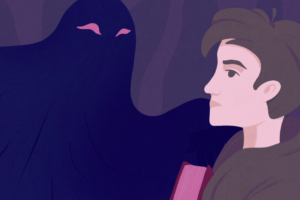Changing Nature of Knowledge in the Internet Epoch
Harvard Senior Researcher David Weinberger on how filtering on the Internet is organized, and the web of knowl...
Transmedia storytelling is a new term, a new concept, but as a phenomenon, it’s quite old. We could talk, for example, about stories such as Alice in Wonderland, The Wizard of Oz, and Tarzan, which were created 100 years ago: they are considered pioneer kinds of stories related to transmedia storytelling. But the term, the concept of transmedia storytelling, was coined by Professor Henry Jenkins from the US in 2003, so in this sense, it’s quite new. And probably because of that, it’s still wide open, so it’s more an elusive concept than an ultimate idea or definition of transmedia storytelling. Nevertheless, we can still trace some of the main characteristics of transmedia storytelling according to Henry Jenkins, who first conceptualized it.
With these three elements, we can think about transmedia storytelling as an integrated experience, so we have all these elements spread out to different platforms with the collaboration of the audience, but in an organized way, in an integrated way, not loosely displayed. This is the main idea of transmedia storytelling. It is also interesting to mention that it is not just related to fictional stories but also to non-fictional contexts.
For example, nowadays we have transmedia storytelling related to activists, politics, journalism, marketing, branding, not just entertainment. This is interesting to highlight.
Also, we could talk about different kinds of transmedia stories or transmedia projects. Robert Pratten suggests three different types of transmedia stories. The first one, probably the most common one, is called the transmedia franchise. What does it mean? A transmedia franchise is probably the idea that everybody has in mind about transmedia: maybe the most famous example is The Matrix, this project from 1999 with the trilogy of three movies but also several other extensions related to the story world of The Matrix, so we have the films, but we also have the animated films, and we have comics, and then we have video games etc.
So, what is the main characteristic of a franchise? In a franchise, we have all these elements of the story spread through different media platforms, but they are somehow independent, which means that if you want, you can just watch one movie from The Matrix and you can enjoy it and have a good time and you will be satisfied with it. Maybe you would like to watch the three movies to have a more in-depth understanding of the story, and then you will enjoy it, but maybe you will never watch the movies, but you’ll play the game, and this is okay. So the idea is that all these different elements can function as an entry point, a way for people to be in touch, to start to be in touch with this story world, and once they are inside this story world, they can choose if they want to migrate and go throughout all the other extensions that are being offered to that. This is the idea of the transmedia franchise.
The second is called portmanteau transmedia. Portmanteau is a French word that means ‘port’, to carry, and ‘manteau’ is a jacket, and so is a kind of suitcase that you can put things into. So the idea of portmanteau is more in the sense that we have different elements across different media platforms, but they are kind of dependent on each other for the audience to really understand what is going on, for the audience to really have a good experience. The classic example of portmanteau transmedia is an alternate reality game. The alternate reality game is well-known nowadays already, and it’s a kind of game that has as its motto ‘This is not a game’ in the sense that it is a kind of puzzle-solving or treasure hunt experience: people will have to follow the clues and go from a website, for example, to receiving a phone call and then go into a live event or coming back to a blog online. Normally, alternate reality games involve online and offline experiences, and for the audience to make sense of the story, they should go through all the elements in order to do so. This is the idea of portmanteau transmedia.
And maybe for us now to conclude, we could think about one of the main questions related to transmedia storytelling, which is, well, what is that for? Why do we need transmedia stories? Do we really need this kind of production? Is it all about the money involved in it? These kinds of questions are relevant for us to try to understand the value of this kind of experience. We could say that, first of all, of course, it is related to making money; this is true, for example, if we are talking about all these Hollywood blockbusters related to transmedia such as Avatar, for example: of course, the financial aspect, the profit, the intention to make money out of is involved.
But we believe that that’s not just this, and it’s not just as simple as making money. Why? Because there are several other projects that are totally not related to making a profit or are not at all related to having a big budget. So it’s very interesting to also realize that for us to produce a transmedia project, we do not necessarily need all the resources that Hollywood has, for example.
We could have as examples all the activism projects being produced all over the world that normally are absolutely not for profits and do not have any kind of intention to make money out of it, but it normally has the intention to bring awareness for people about certain issues.
We could say then that the point of transmedia storytelling is to offer a more meaningful experience for the audience, to offer an enriched experience in the sense that people who are interested in a certain story world and a certain issue can have the opportunity to go deeper and have more information; to go deeper and be able to know more about this story world that they like, that they are related to and that somehow is significant for them.

Harvard Senior Researcher David Weinberger on how filtering on the Internet is organized, and the web of knowl...

Sociologist Ruth Penfold-Mounce about death awareness events, ethical challenges that we face and how violent ...

Historian Peter Jones on the first European universities, different models of the education regulation and the...